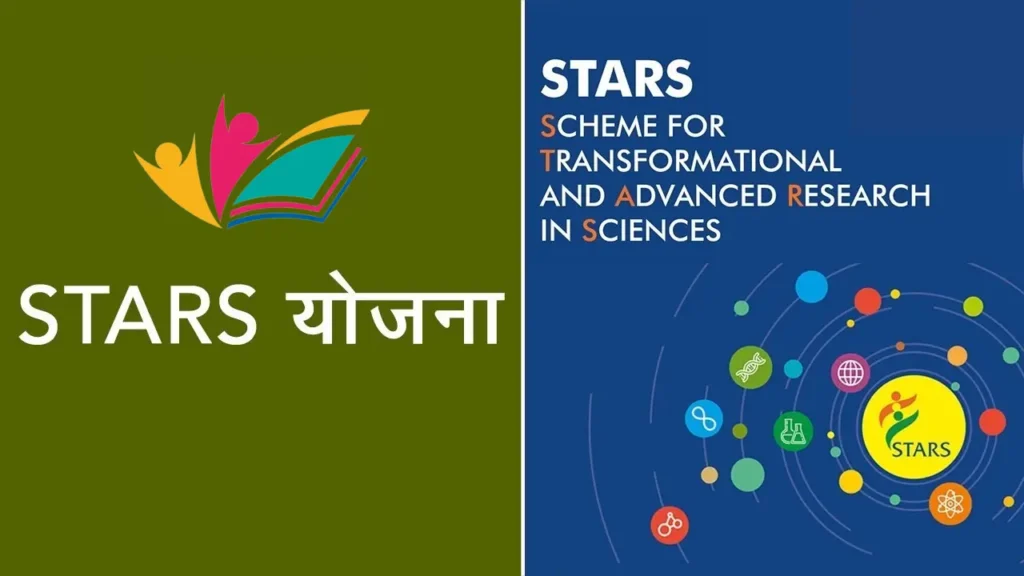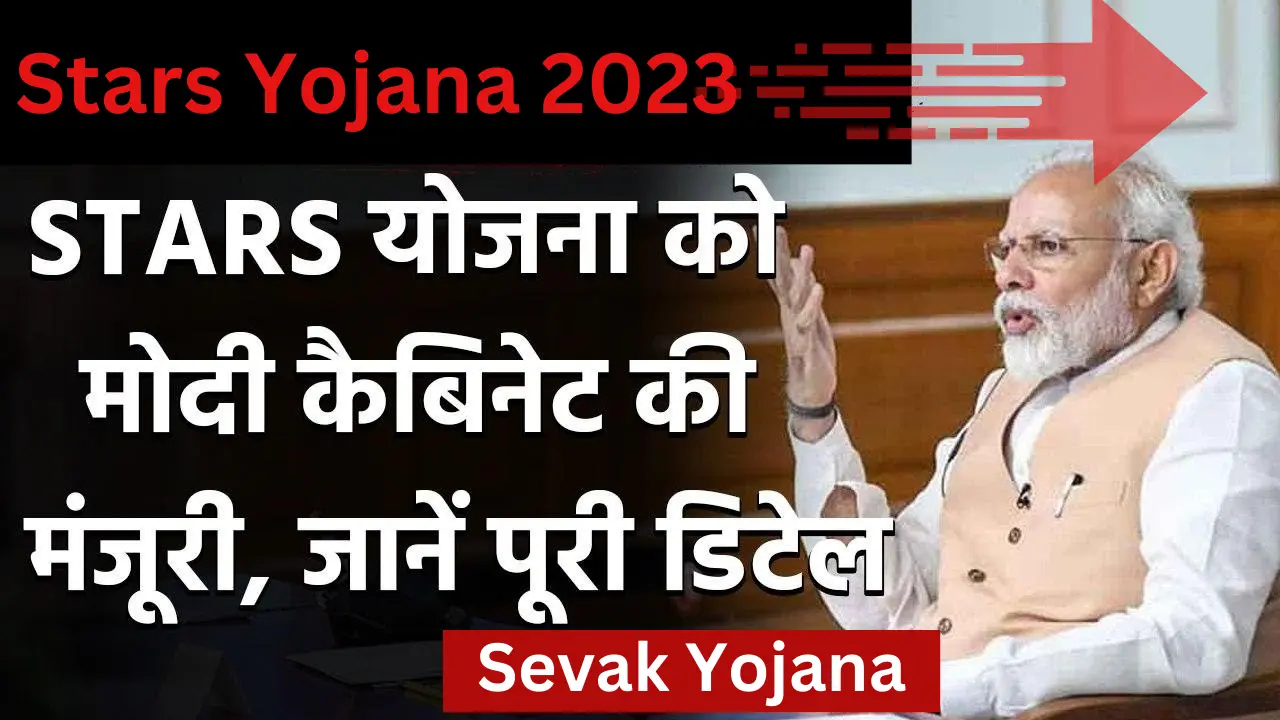Stars Yojana: This scheme aims to revamp teaching and learning across all states in India, offering a fresh perspective to the education sector. The STARS scheme, a centrally sponsored initiative, seeks to provide a new outlook and enhance educational outcomes nationwide.
Under the STARS scheme, a National Representation Centre called PARAKH will be established as an independent organization. The Ministry of Education will oversee the implementation of the scheme, which has been allocated a budget of 5,717 crore rupees by the Government of India for its successful execution.
Stars Yojana (STARS) 2023
The STARS scheme, launched by the Central Government, aims to boost education by enhancing teaching, learning, and overall educational quality across states. Being a centrally sponsored initiative, it underscores the government’s dedication to uplifting the education sector.
The scheme outlines the establishment of the independent National Assessment Centre, PARAKH, under the STARS Scheme, with the Ministry of Education overseeing implementation.
To ensure the successful execution of the STARS schemes, the central government has allocated a substantial budget of Rs 5717 crore. Notably, the World Bank is set to contribute an additional ₹3700 crore, emphasizing collaborative efforts for achieving improved educational outcomes.
Stars Yojana: Overview
| Scheme | STARS Yojana (STARS) |
| Scheme launched | By Prakash Javadekar |
| Objective | Strengthening the education sector |
| Beneficiary | Student |
| Related Departments | Ministry of Human Resource Development |
| Year | 2023 |
| fixed budget of the Scheme | 5717 crore rupees |
| Social class | Central government government schemes |
| Scheme implemented | In 6 states of the Country |
| Official Website | Will be launched Soon. |
Objective of STARS Scheme
The primary goal of the STARS Scheme 2023 is to advance education and offer financial support to science projects. The plan emphasizes a new dimension by promoting an interdisciplinary and collaborative approach to research, fostering coordination, and enhancing knowledge in exploration activities.
In conjunction with the STARS scheme, efforts will be made to address issues in primary education by gathering information to facilitate resolution. Additionally, the scheme aspires to establish an international benchmark for scientific research.
The initiative places particular emphasis on addressing specific needs and challenges in critical sectors such as agriculture, health, security, and the environment through Orient Science.
Introduced by the MP government to inject fresh energy into education, this special scheme focuses on enhancing the teaching and learning processes, ensuring a unique and impactful improvement.
Benefits and Features of STARS Scheme 2023
- The magnitude and teaching-learning process will be reinforced by this plan.
- Under the plan, a National Assessment Center will also be established as a separate, autonomous institution.
- The Ministry of Education oversees the STARS program.
- The government set out ₹ 5717 crore for this scheme’s budget. Of which the World Bank will contribute Rs 3700 crore.
- The field of education will advance thanks to this plan.
- Education will be improved via the STARS Scheme in 2023.
- This plan will also enhance the teaching assessment system.
- Six States—Himachal Pradesh, Rajasthan, Maharashtra, Madhya Pradesh, Kerala, and Orissa—have so far adopted the program.
- A component of the Self-reliant India initiative is the STARS scheme.
- The New Education Policy has led to the creation of the STARS Scheme 2023.
- The emergency response component of the plan will also eliminate obstacles to learning.
- Additionally, the plan will improve fundamental and early childhood education.
STARS Yojana Eligibility & Criteria
- The STARS Scheme (STARS) 2023 is exclusively designed for individuals undergoing skill development training from eligible providers. Training providers without previous ties to government institutes or NSDC will undergo a pre-screening process by the Sector Skill Council (SSC) under Compatibility Innovation facilitated by the NSDC.
- To qualify for the STARS Scheme 2023, beneficiaries must have a minimum educational qualification of 10th grade and be at least 18 years old.
States covered under STARS Scheme 2023
The following States are presently covered under STARS Scheme:-
- Hp
- Rajasthan
- Maharashtra
- Madhya Pradesh
- Kerala
- Odisha
The Central Government will start ADB funded projects like STARS Scheme in five states which are Tamil Nadu, Uttarakhand, Gujarat, Jharkhand and Assam.
How to apply Stars Yojana 2023
To access the benefits of the recently launched STARS Scheme 2023 by the Government of India, it’s crucial to know that the official portal and application process are not yet in place.
As the application process is currently unavailable, there’s no cause for worry. Rest assured that we will keep you updated through our articles as soon as the official portal is launched, and the application process kicks off.
For the latest developments on the STARS Scheme 2023, we recommend visiting our website regularly to stay well-informed.
Perusal:

The STARS Project for States received the green light from the Cabinet in October 2020 to be implemented as a centrally sponsored scheme.
After signing the loan agreement, the STARS project officially started on February 23, 2021, with a planned duration of five years, concluding in the fiscal year 2024–25.
This strategic initiative is currently in progress in six identified states: Himachal Pradesh, Maharashtra, Odisha, Rajasthan, Madhya Pradesh, and Kerala.
Crafted under the umbrella of Samagra Shiksha, the STARS program is intricately designed with a specific focus on components actively contributing to the growth of school education.
This strategic emphasis reflects a commitment to fostering comprehensive and sustainable advancements in the educational landscape of the selected states.
Key points
- The Union Cabinet has given its approval to the project, which will alter the nation’s educational system on a systemic level during the following five years.
- The World Bank will provide 15% of the project’s overall cost, the Central Government will pay for 53% of it, and the State Governments will cover the remaining portion.
- The World Bank would contribute roughly Rs 3700 crore (US$ 500 million) towards the overall cost of the STARS project, which is estimated to be Rs 5,718 crore.
- This program will incorporate non-governmental organizations through public-private partnerships, or PPPs.
- In order to prepare excellent instructors, additional emphasis will be given to their training under this project.
- Significant advancements will also be achieved in the assessment and evaluation system at the same time.
Selection of States
- Six states across the nation will be the first to get the project’s implementation, chosen by the Union Ministry of Education (previously the Ministry of Human Resource Development) based on how well each state performed on the Performance Grading Index (PGI).
- Kerala, Rajasthan, and Himachal Pradesh are among the three states that fall into the category of “lighthouse states,” meaning they will serve as guides for other states.
- The remaining three states—Odisha, Madhya Pradesh, and Maharashtra—have also been dubbed “learning states,” and it is anticipated that they will emulate lighthouse states.
- Under the context of school education, this project—also known as the Launch Vehicle of National Education Policy-2020—will be carried out on a pilot basis in these six states.
Necessity:
- The current issues facing the Indian school system can be roughly categorized into four main areas:
- Obtain
- Fairness
- Authority
- Education’s Quality
- A significant advancement in the area of education accessibility has been made possible by the ‘Sarva Shiksha Abhiyan’ (SSA) of 2001 and the ensuing Samagra Shiksha Yojana.
- In a same vein, much progress has been made in guaranteeing equitable access to education for all segments of the population.
- However, numerous significant reforms are still required to improve the nation’s educational system’s quality as well as its administration and functioning.
- The ASER Report 2019 states that children as young as class 3 were found to be ignorant of the alphabet, and there were significant age disparities among students in the same class across the nation.
- The ‘National Education Policy-2020’ has also voiced concerns about the standard of education provided in Indian schools, which is noteworthy.
Challenges
It is important to highlight that currently, the country hosts a significant number of automated institutions, which the Justice Verma Commission, formed by the Supreme Court in 2012, labeled as ‘degree selling shops.’ Concerns arise regarding the capabilities of ‘Parakh,’ as proposed under the National Education Policy-2020. Questions linger about whether this entity will possess the necessary expertise in evaluation, financial management of education, or teacher education.
The STARS project, advocating for substantial changes in the country’s education system, faces a formidable challenge in successfully implementing these reforms over the next five years.
The ongoing impact of the COVID-19 epidemic has inflicted damage on education and various other sectors, adding an extra layer of complexity to the task.
Despite sharing overarching goals, there are distinctions between the STARS project and the National Education Policy-2020.
For instance, while NEP-2020 aims to achieve basic literacy and numeracy for children up to class 5 by the year 2030, the STARS project focuses on achieving this goal up to class 3.
These nuances underscore the need for careful consideration and coordination in aligning and implementing educational reforms in the evolving landscape.
Stars Yojana (FAQ’s)
What is star program?
The main aim of the STARS initiative is to improve the quality and management of education in six Indian states: Himachal Pradesh, Maharashtra, Rajasthan, Odisha, Madhya Pradesh, and Kerala. The World Bank asserts that this project has the potential to strengthen India’s school assessment system.
What is star program in Rajasthan?
The STARS initiative is being implemented in six designated states: Kerala, Madhya Pradesh, Rajasthan, Odisha, Himachal Pradesh, and Maharashtra. The core of the STARS program is holistic education, focusing on specific elements that directly contribute to increased school enrollment.
What is the Star Project at School?
The STARS project, a centrally supported initiative, seeks to improve the quality of education in schools. The agreement’s objective is to enhance the management and standard of education in six Indian states.
How did you become a star?
Stars form through a process where helium gas transforms into particles via hydrogen gas fusion. This fusion process persists for billions of years within all stars. In essence, stars come into existence as helium is converted into particles through the hydrogen gas fusion process.

